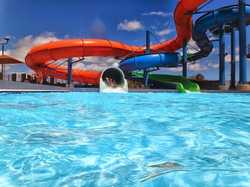
Injuries from waterslides and other hazards in water parks are common and can occur even in closely monitored facilities. Each year, thousands of people suffer injuries sustained in public water parks. Common injuries include scrapes and bruises, broken bones, and spinal cord damage. Waterslides have the potential to cause life-changing and even deadly injuries.
Waterpark Injuries in the United States
In 2015, the US Consumer Product Safety Commission issued a report that indicated 4,200 individuals suffered injuries in public water parks that year. A previous study conducted by NJ.com showed that over a period of five years, 122 injuries were caused by waterslides alone. This makes waterslides more likely to cause an injury than a roller coaster. From wave parks to lazy rivers, waterparks are filled with dangers that cause significant injuries and considerable numbers of fatalities each year.
Fluid Dangers
Fluids are easily dispersed and difficult to spot within the moving waters of the waterpark. Urine, blood, chlorine, and other chemicals and contaminants can spread disease, exacerbate allergies, or trigger toxic reactions that can harm a swimmer’s health. Some contaminants such as E. coli bacteria are exceedingly common and CDC studies conducted in 2013 showed that 58% of public swimming pools tested positive for E. coli contamination.
Poor Supervision
Waterpark personnel are often young and inexperienced. They typically have limited CPR training and may not respond promptly and appropriately to an emergency event. Many accidents in waterparks occur because staff are distracted by phones, friends, and food while they are supposed to be watching over the safety of guests. While the presence of lifeguards and security personnel may provide a perceived sense of protection, it is often a false sense of security that can lead to serious harm with potentially fatal consequences.
Establishing Negligence
Waterparks have a duty to the general public. They must provide reasonably safe conditions that are conducive to preventing injuries. Waterparks are responsible for maintaining equipment, preventing access to restricted areas, and posting signs that warn visitors of potential hazards. They must also maintain sufficient staff, including lifeguards, to help protect visitors from drowning, slips and falls, and other dangers while they are on the premises. Waterparks that fail in their duty can be held liable for the injuries and wrongful deaths their negligence causes.

